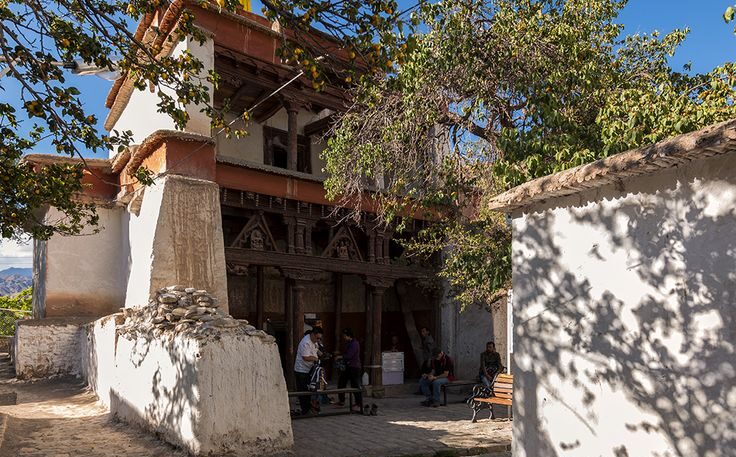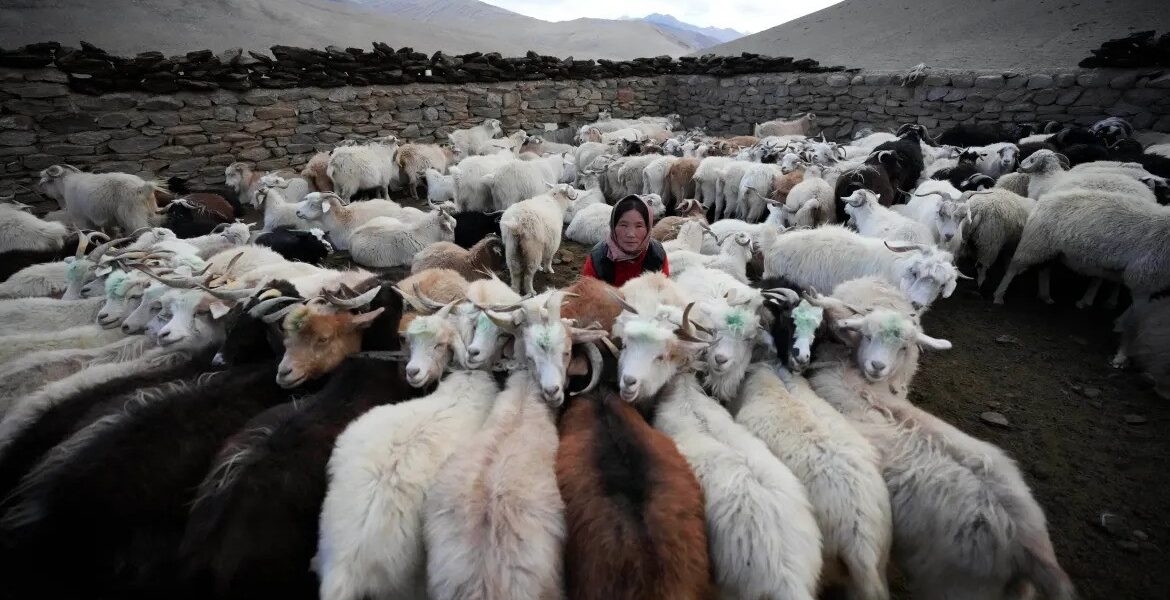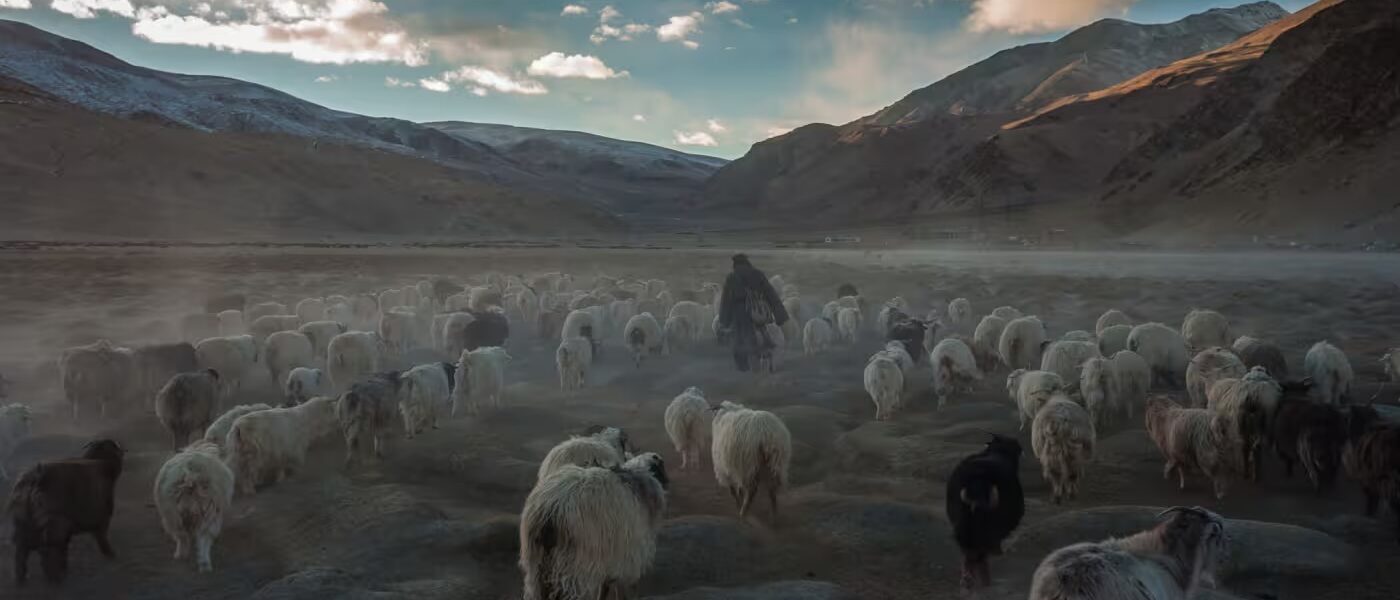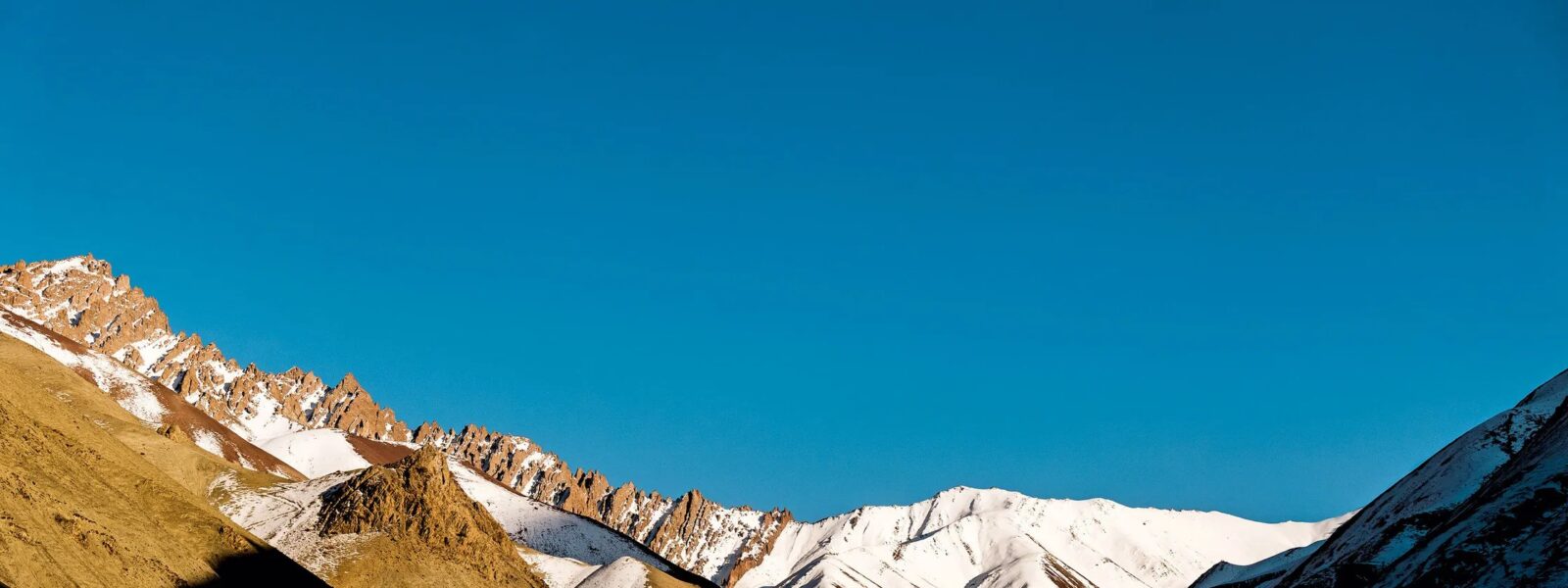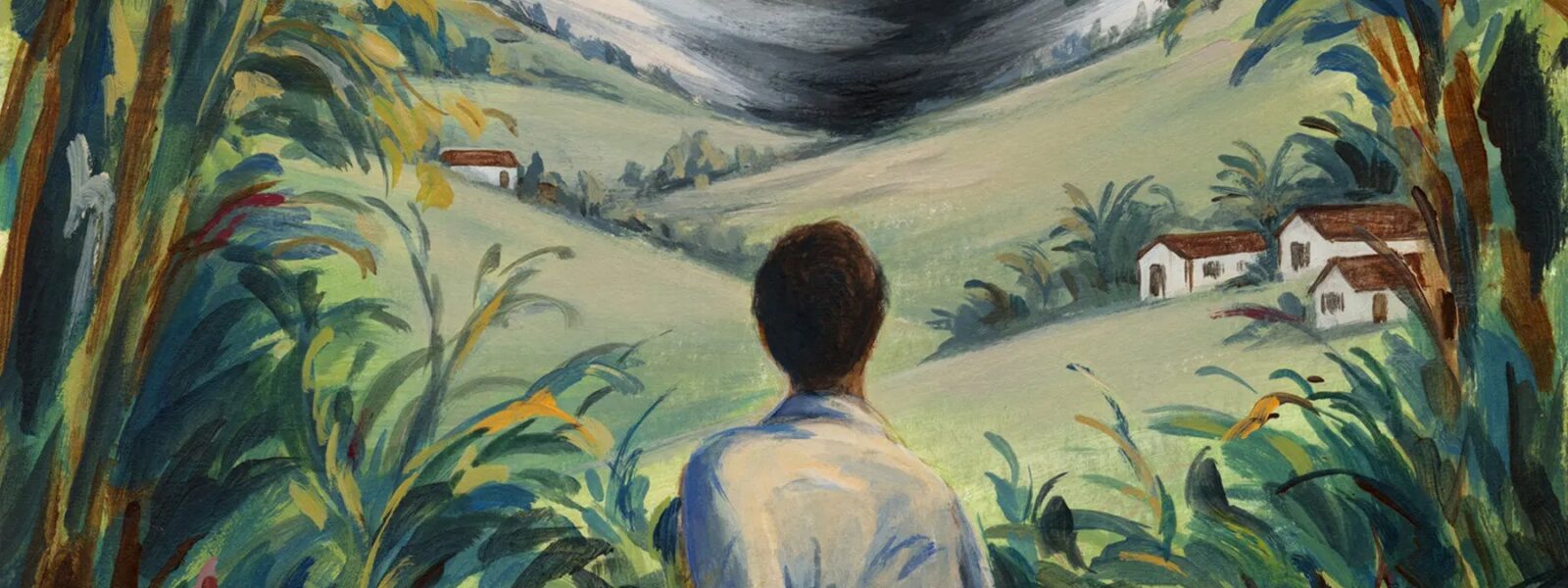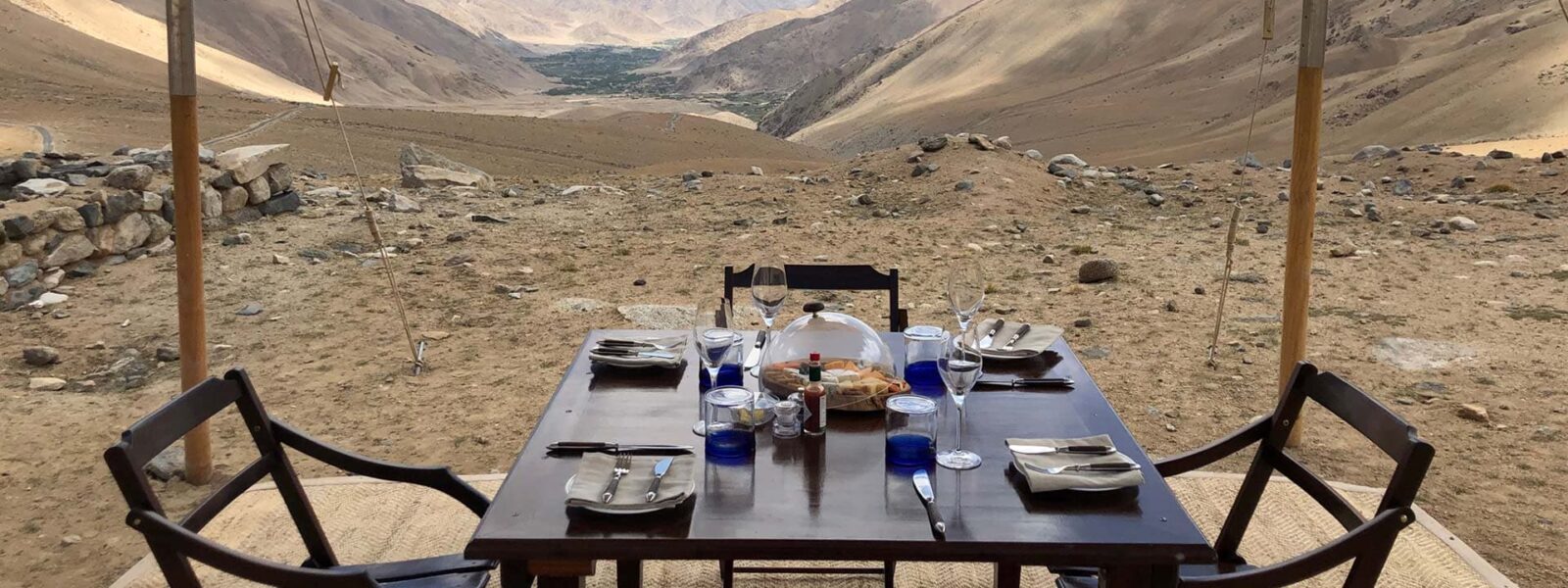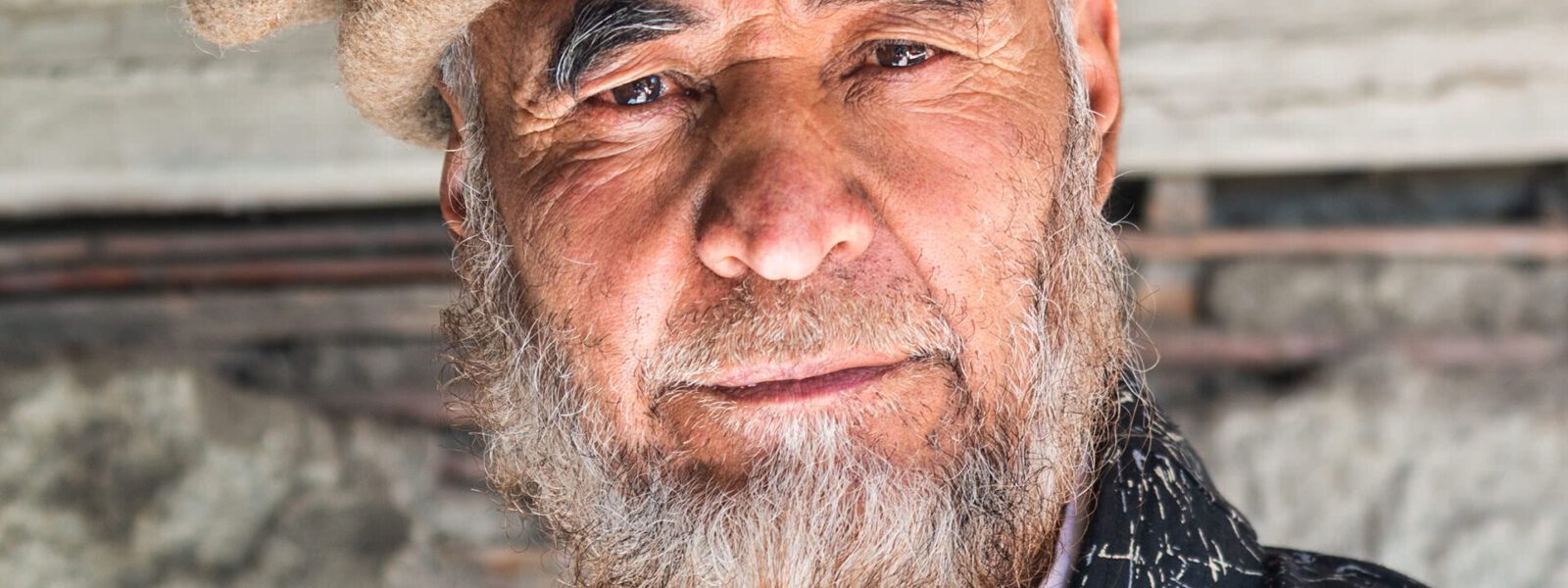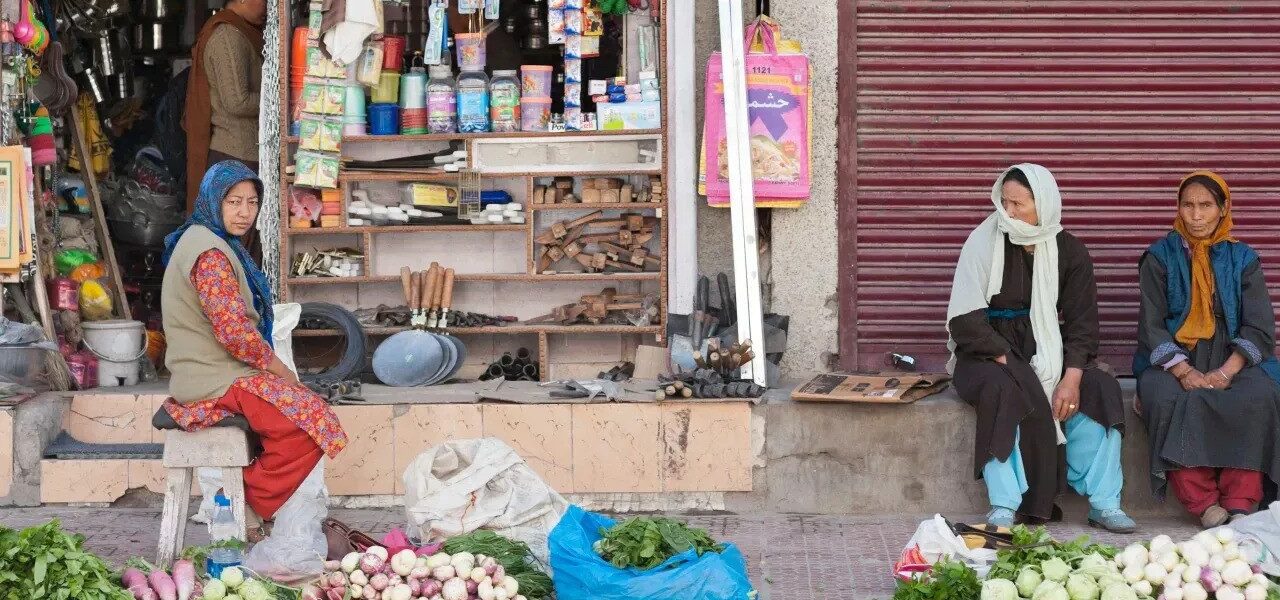~The Road to Alchi — Dust, Distance, and the Indus
There is a bend in the road west of Leh where the wind sharpens, and the Indus glints like a blade left in the sun. It is there the air begins to change. Not in temperature, but in stillness. A silence that presses into the bones, that grows louder as you descend from asphalt into memory. The road to Alchi Monastery is not long. But it is old.
There are no signboards that tell you about frescoes. No souvenir shops beckoning tourists to buy blessings in brass. Only the cliffs, the poplar groves, and the river. The monastery lies low, folded into the valley wall, half-concealed by apricot trees. Most visitors pass it by, seeking grandeur elsewhere—Thiksey’s terraces, Hemis’s festivals. But Alchi Gompa waits without asking to be found. It belongs to another rhythm.
This is the Indus Valley, but not as you know it. Here the past hasn’t been reconstructed. It’s intact. Walk the stony path toward the Chos-kor complex and it feels less like entering a temple and more like crossing into a story written in mud and pigment. Alchi does not shout. It never did.
The hills around are barren, but the silence is not empty. It’s full—of breath, of time, of things that refuse to decay. This monastery, unlike most in Ladakh, escaped the winds of war and reform. It was spared. And because it was spared, what waits inside remains almost untouched: 11th-century Buddhist murals, their mineral colors locked in shadow, waiting for light. It is this hush, this feeling of preservation without exhibition, that defines the Alchi experience.
European travelers who arrive here often do so by accident. A missed turn, a wrong monastery. And yet, when they step into the village, they pause. Not because of anything seen—but because of something felt. The kind of spiritual authenticity that no itinerary can plan. The kind that whispers, not advertises.
To call this place a tourist destination is to miss the point. Alchi is not a destination. It is a threshold. And once crossed, you begin to see that this journey has less to do with where you are and more to do with how you look. The wall paintings are still ahead. But already, something has shifted.
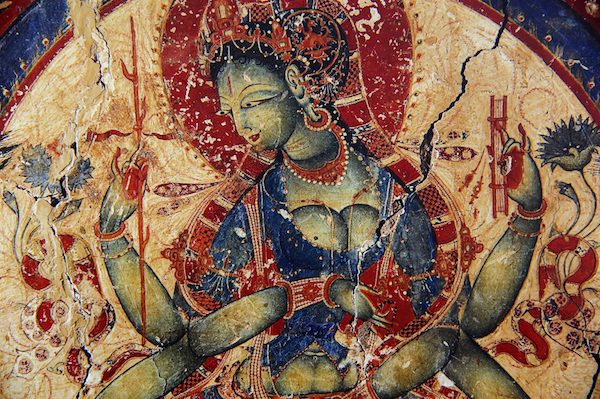
Chos-kor — The Temple That Doesn’t Shout
You enter the Chos-kor complex not through gates, but thresholds. Weathered wooden beams mark the passage, their grains darkened by centuries of Himalayan wind and the touch of wool-clad shoulders. There is no grandeur in the entrance. No gold. No announcements. Just a doorframe low enough to make even a humble man bow.
Inside, three main temples sit like old monks—quiet, inward-looking, resolute. The Sumtsek Temple, built from mud and timber, rises with awkward dignity, a three-storey structure that seems to lean slightly, as though listening to its own silence. Its name means “three-storeyed” in the local tongue, but nothing here calls attention to itself. Every surface waits, painted not to dazzle but to endure.
To its side is the Dukhang, the assembly hall. Dark, narrow, silent. The smell of old wood, oil lamps, and dust hangs in the air like breath that has forgotten to leave. There is no chanting when I enter. Only the sound of my steps, quickly swallowed by the floorboards.
This is not the Ladakh that finds its way into posters. There are no wide mountain panoramas here. No photogenic monks spinning wheels or smiling in crimson robes. This is a place where religion was once practiced without spectators. A place where the murals were never meant to be seen with cameras, only with stillness.
Some of the paintings have chipped. Some corners have darkened. But the walls still hold the shape of breath. Layers of ochre, lapis, and green pressed into mud plaster—painted not as decoration but as devotion. This is sacred space, not curated display.
Most visitors walk through these temples too quickly, scanning for the famous. The Bodhisattva Avalokiteshvara, the Wheel of Life, the multi-armed protectors. They move like curators without notes, missing the stillness between the brushstrokes. But this place does not reward quick eyes. It opens slowly, like pigment in moisture.
The walls here have watched centuries. Through invasions, abandonments, reforms. What they show is not just 11th-century Buddhist iconography—but evidence of the untouched. They have not been restored, repainted, or reimagined. What remains is original. And in that, perhaps, lies the deepest reverence of all.
I stand in the gloom of Sumtsek, feeling more than seeing. The silence speaks first. Then the color. Then, finally, the form.
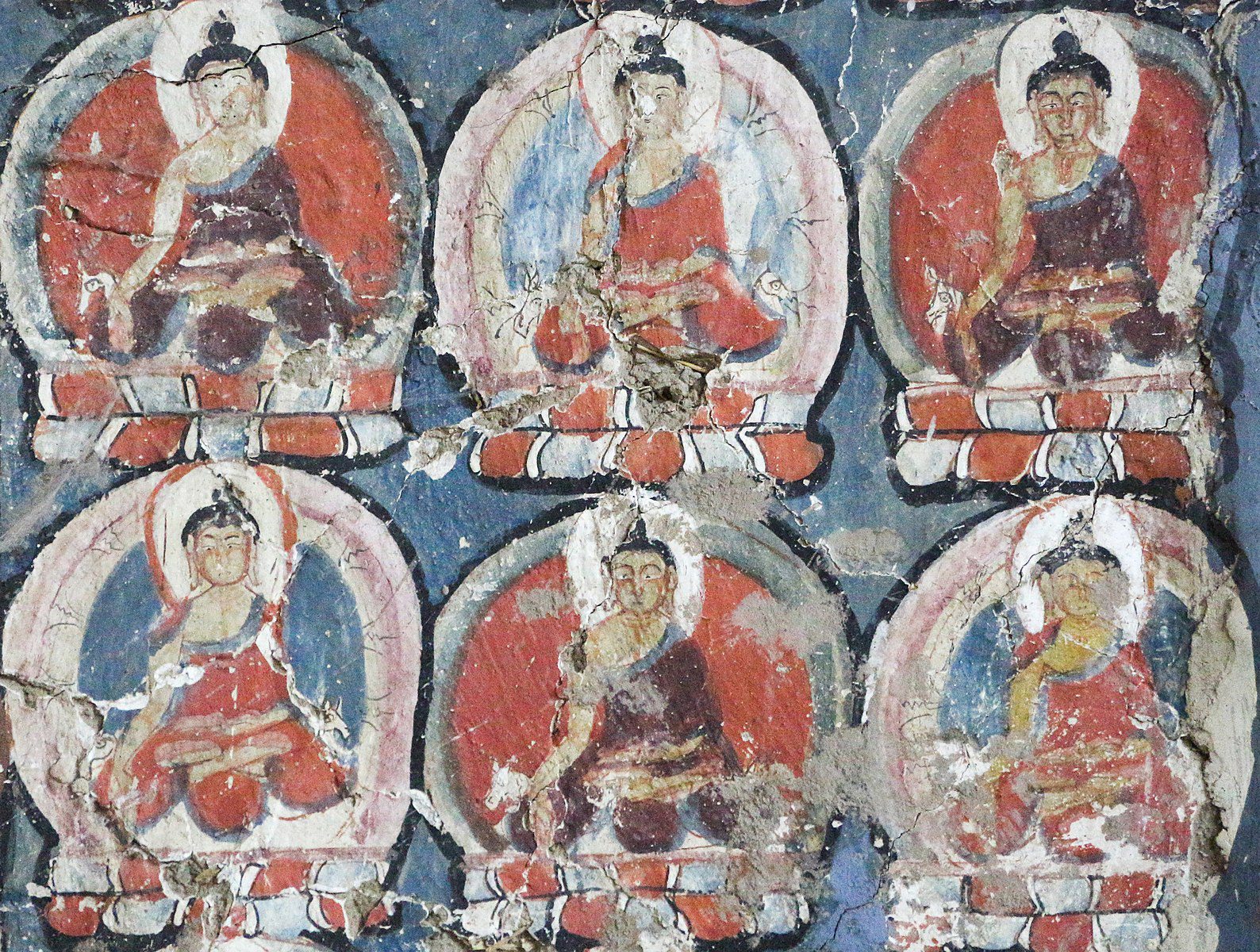
The Wall Speaks — Without Words or Touch
There is a wall inside the Sumtsek that does not wait to be seen. It simply is. And it has always been. Step close and it will not yield easily. The colors do not leap. The lines do not call. You must wait for your own eyes to adjust to the rhythm of shadow. Then, gradually, the 11th-century Buddhist murals begin to reveal themselves—not as images, but as encounters.
A thousand tiny brushstrokes form the folds of a robe. The lapis lazuli has lost none of its depth. A red, made from crushed cinnabar, still pulses faintly beneath centuries of dust. These are mineral pigments, drawn from mountain and earth, applied not for show but for silence. The figures are not painted to impress. They are painted to inhabit the wall.
A Bodhisattva gazes down—not at you, but through you. Eyes elongated, irises rimmed in gold. There is no sentiment in the expression. Only presence. The kind that remains long after the viewer has gone. Vajrayana symbolism is everywhere—lotuses, wheels, mudras—but none of it is labeled. The meaning is not explained. It is suggested. In this temple, the wall speaks without language.
One corner has darkened where the ceiling leaked a hundred years ago. A mandala has flaked slightly near the base. But most of the images are whole. Remarkably whole. In Europe, such paintings would be cordoned off, encased, perhaps even repainted. Here, they are simply left alone—touched only by shadow and the passing breath of pilgrims.
The question most often asked—how did the colors survive?—has no poetic answer. The walls were thick. The doors remained closed. The village remained quiet. No one came with ideas about improvement. No one tried to clean what was not dirty. That is all. And yet it is enough to keep the reds red, the greens green, the golds whispering.
I do not touch the wall. No one should. Not because of rules. But because it doesn’t belong to this century. Or any. These ancient Buddhist paintings in Ladakh are not relics. They are presences. And to touch them would be to disturb a silence that has outlasted empires.
When I step back, the figures recede. Not because they fade, but because they are complete. They do not need my interpretation. They do not ask to be understood. They only ask that I looked—and that I listened.
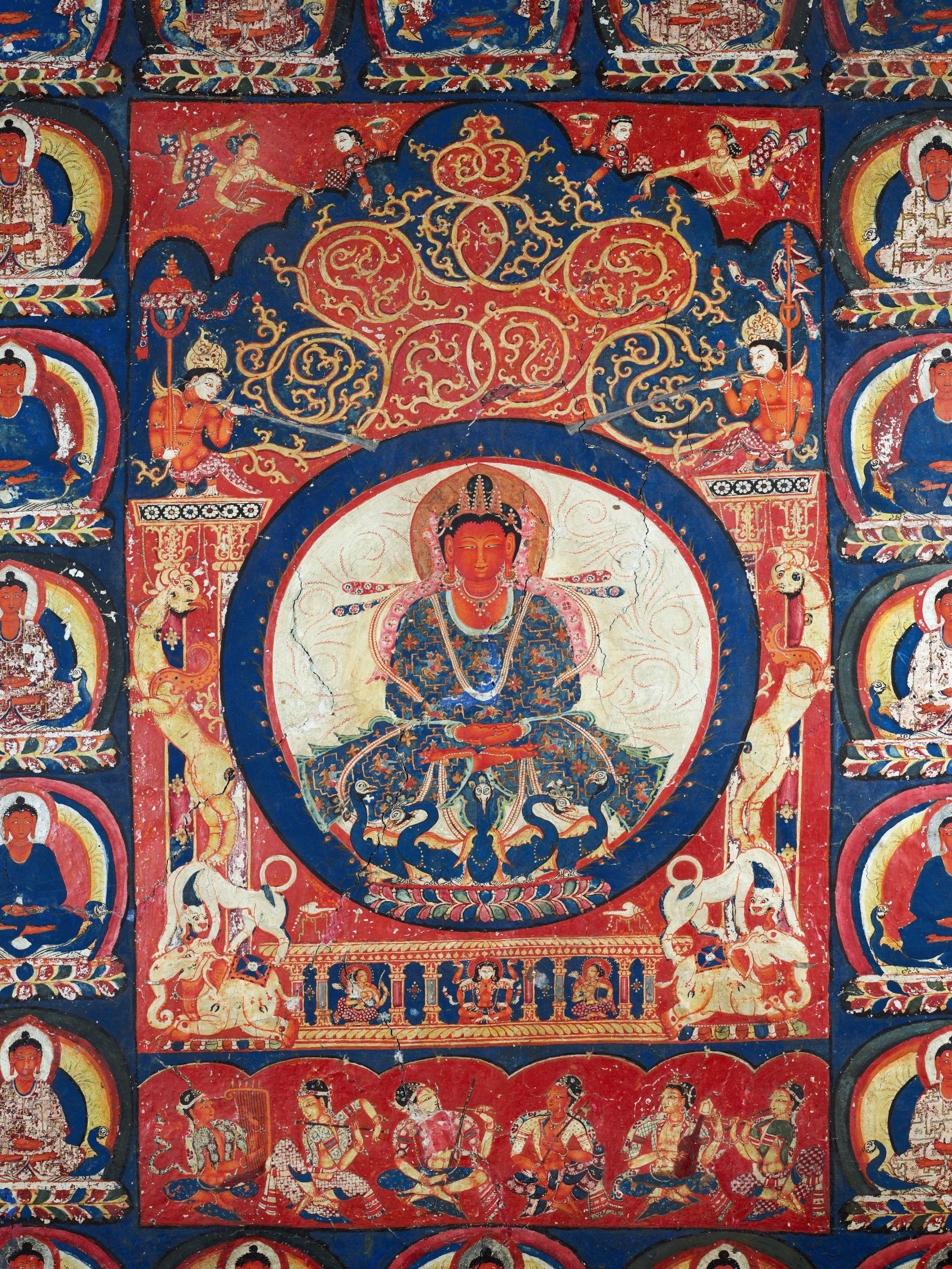
Not for the Tourist — For the Watcher
There are no signs here that say “No Photography.” There are no guards, no velvet ropes, no recorded voices whispering explanations in five languages. And yet, nobody reaches for their phone. Not because they are told not to, but because they forget to. The Alchi paintings do not ask to be captured. They ask to be witnessed.
This is not a site curated for itineraries. It is not “one of the top ten things to do in Ladakh.” It is, instead, a place for those who arrive slowly. Who sit. Who let their eyes adjust. The tourists come and go. They walk in pairs. They say things like “faded” and “ancient” and “incredible.” But the walls do not respond to such words. They respond to patience.
The locals say the paintings survive because no one tried to fix them. The temple was used, not visited. There were years when snow blocked the road entirely. No outsiders came. And that is when the murals breathed quietly into the cold air, unobserved, unchanged. They were not abandoned. They were simply left alone.
Now, as more travelers trace their steps into the Indus Valley, the importance of observation over consumption grows sharper. This is a place where silence is not an absence but a choice. Where looking becomes a kind of prayer. The paintings are not entertainment. They are thresholds. And not all who enter cross.
To the watcher, the value of Alchi is not in facts. It is not the date of construction, nor the name of the pigment. It is not the academic lineage of Vajrayana art, nor the influence of Kashmiri styles. Those things are known. But knowledge is not why we are moved. It is the act of being still. Of meeting a presence that does not perform.
You do not “see” the wall paintings. You allow them to reach you. You become porous. You forget your name, your time, your departure schedule. You become a quiet eye. And that is when the color begins to speak. Not loudly. Not clearly. But truthfully.
The watcher does not leave with souvenirs. The watcher leaves with a memory of silence held in color. A kind of inner imprint. And for those who come to Ladakh seeking something they cannot name—this is it.
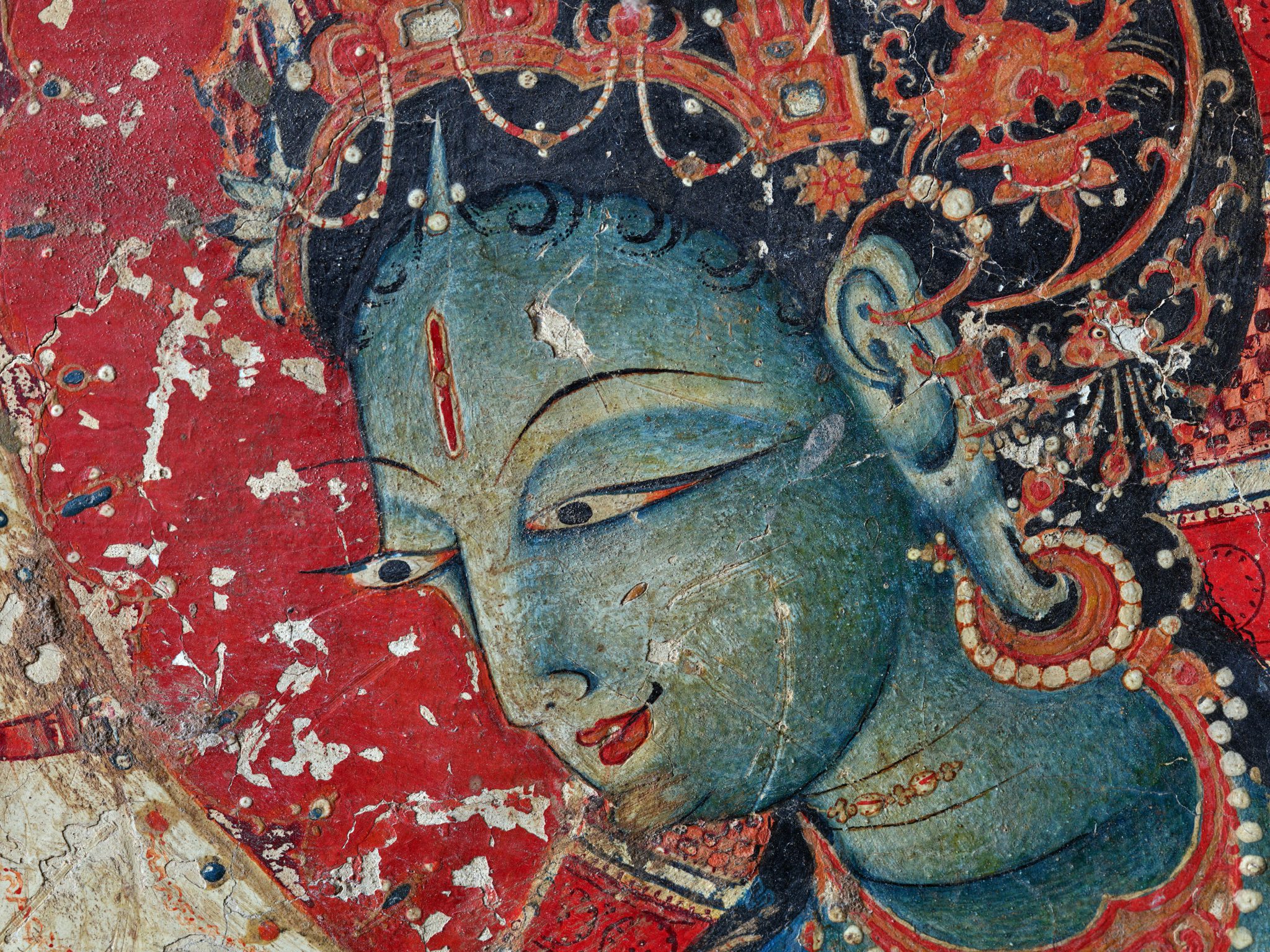
Paint That Has Not Faded — A Stillness in Time
I step back through the low wooden threshold. The air outside is brighter, louder somehow, though nothing has changed. A crow calls from the apricot branches. A breeze stirs the dust along the path. Yet something has shifted—not in the world, but in the way I now see it.
The murals inside Alchi do not remain in the temple. They follow. Not as images, but as sensations. You begin to notice the pigments of the landscape—the iron-red soil, the washed jade of the Indus, the faint gold on a child’s wool hat. You begin to see that color can be a form of memory. Not just decoration, but a way of remembering where devotion passed.
There is no plaque to mark the moment. No final summary. Alchi gives nothing that can be wrapped or explained. It is a place that leaves you a little less certain and a little more alert. To detail. To silence. To things that endure not by force, but by being left untouched.
Most visitors, when they return to Leh, will scroll through their photos of lakes, passes, and monasteries. But they will find few of Alchi. And that, perhaps, is exactly right. The wall paintings were not meant to be taken. They were meant to remain. And in remaining, they do something rare—they change the one who came.
There are many temples in the Himalayas. Some are vast. Some gleam with wealth. But Alchi does not dazzle. It listens. And in that stillness, it preserves a truth deeper than gold: that devotion, when unspoken, lasts longer. That color, when left in darkness, does not fade.
If you ever reach this place—this hidden Buddhist monastery in Ladakh—walk slowly. Say nothing. Let the wall speak. You may hear nothing at first. But in time, you will carry something away: not a picture, not a lesson, but a stillness. One that does not fade.
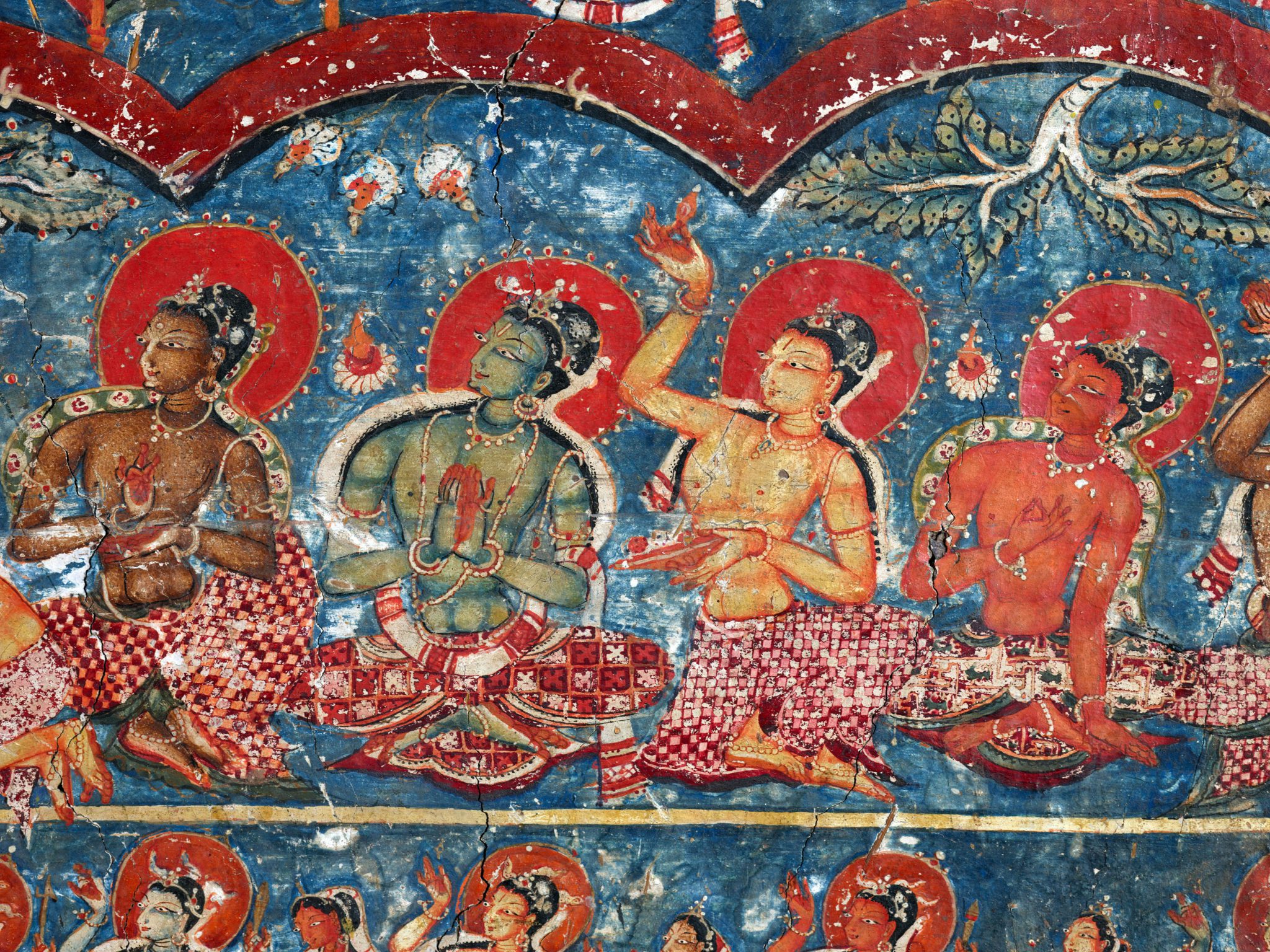
About the Author
Edward Thorne is a British travel writer and former geologist whose prose is marked by sharp observation, restrained emotion, and an unwavering devotion to the physical world. He does not describe feelings — he describes what is seen, heard, touched. And in those descriptions, readers find the silence, awe, and disquiet of remote landscapes.
Born in the mist-covered hills of Borrowdale in England’s Lake District, Edward spent over a decade mapping fault lines and fossil beds across Central Asia before turning his pen to human history etched in stone. He now divides his time between a stone cottage on the Isle of Mull and a quiet room above the Indus in Leh, Ladakh.
His work avoids spectacle. He writes not to impress, but to witness. Not to embellish, but to preserve. Through his columns, readers are invited to walk slowly, listen deeply, and see the world not as a postcard — but as a presence.
When he is not writing, Edward is usually walking. Or waiting for the light to change on a distant ridge.

